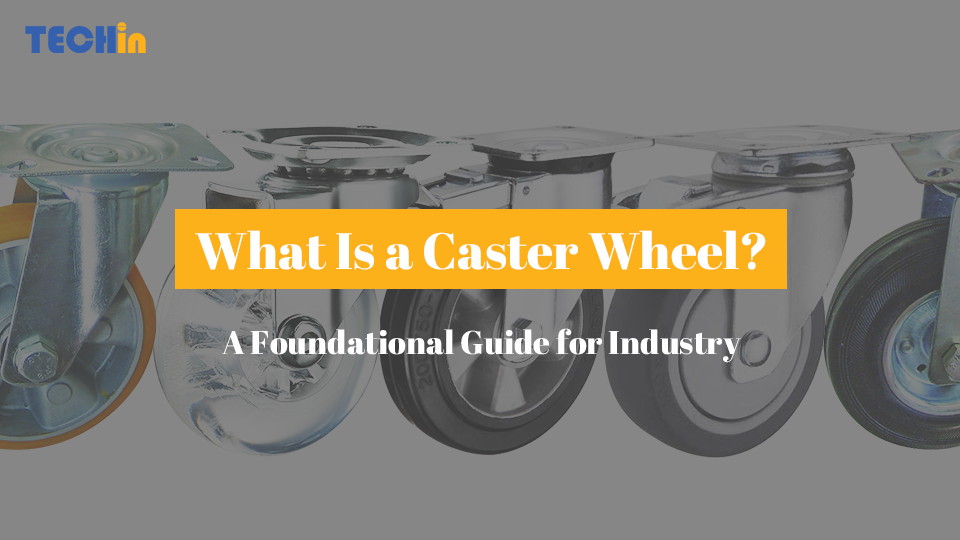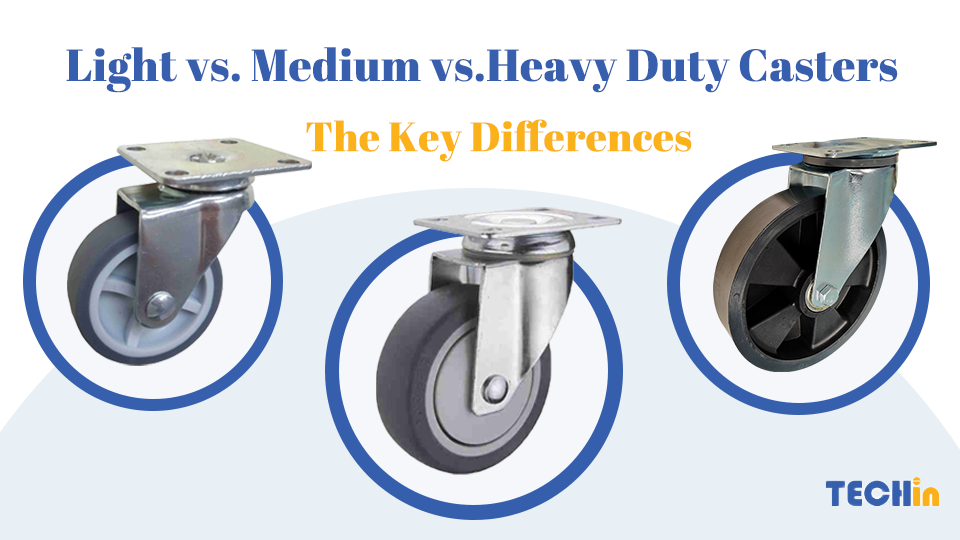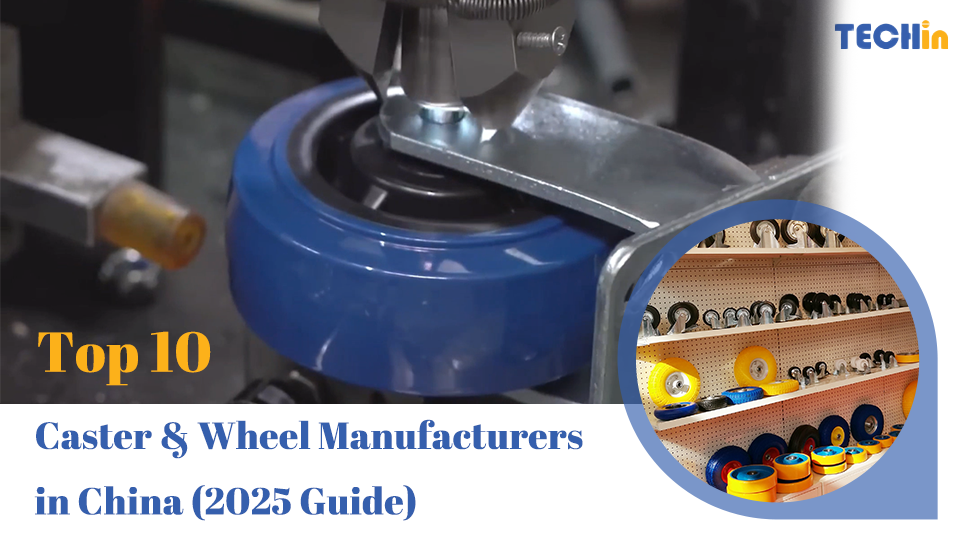Introduction
In your industry, mobility isn’t just about convenience—it drives efficiency, safety, and profitability. Yet, the humble caster wheel is often overlooked. An incorrect caster can lead to operational strain, downtime, and damage. The good news? The right knowledge empowers you to choose casters that truly enhance your workflow.
A caster wheel is a complete assembly—wheel, housing, and mount—that attaches to the bottom of equipment to enable smooth movement. Unlike a simple wheel, a caster provides full mobility, including swiveling. You’ll find them in countless applications, from hospital beds to heavy-duty industrial carts, where they are essential for improving safety, maneuverability, and efficiency in any professional setting.
Now, let’s break down the essentials, from a caster’s core purpose and parts to selection tips that help procurement managers and buyers like you make the smartest possible choice.
What Are Casters?
A caster is a wheel assembly designed to attach to the underside of an object, enabling it to move. It usually includes the wheel itself, the fork or rig that holds the wheel, and a mounting plate or stem. Casters can be rigid (straight-line movement only) or swivel (full 360° rotation).
What Are Wheels?
A wheel is the round component that rolls on the ground. By itself, a wheel cannot swivel or change direction. While wheels are critical to a caster’s function, they are only one part of the system. If the wheel is the “engine” of motion, the caster assembly provides the steering and support.
What Is the Difference Between Wheels and Casters?
The key difference is complexity and function. A wheel is a single rolling component for forward or backward movement. A caster, however, is a complete unit combining the wheel, rig, and mounting mechanism. This assembly adds maneuverability, stability, and proper load distribution—making it the intelligent choice for moving valuable equipment.
What Is the Purpose of a Caster Wheel?
At its core, a caster’s purpose is to make objects easier to move safely and efficiently. From small furniture to massive industrial machinery, casters reduce physical strain on workers, protect flooring from damage, and improve overall productivity. Their design allows carts and equipment to glide smoothly across various surfaces.
What Are the Benefits of Caster Wheels?
Choosing the right caster brings several key benefits to your operation:
- Load-bearing capacity: They are engineered to support heavy weights without failure.
- Maneuverability: Swivel casters allow for easy navigation in tight or crowded spaces.
- Floor protection: Soft-tread wheels can prevent scratches and reduce noise.
- Durability: Specialized materials are available to resist chemicals, temperature extremes, and debris.
For procurement managers, this means longer-lasting equipment, reduced maintenance costs, and improved workplace ergonomics.
How Do Caster Wheels Work?
Casters function by combining rolling and swiveling actions. The wheel rolls along the floor, while the swivel joint in the rig allows the entire assembly to rotate. Bearings within the wheel and swivel head reduce friction, making it easier to push or pull heavy loads and ensuring smooth, controlled movement.
What Are the Three Types of Casters?
Casters generally fall into three core types:
- Rigid (Fixed) Casters: These roll in a straight line, forward and backward, making them ideal for stability over long distances.
- Swivel Casters: They rotate a full 360°, offering maximum flexibility for making tight turns.
- Braking Casters: These include a lock to stop the wheel, the swivel, or both—an essential safety feature when equipment needs to be secured in place.
What Are the Parts of Casters?
A caster is a system where every part plays a role:
- Wheel: The rolling element that makes contact with the floor.
- Tread: The outer surface of the wheel.
- Bearing: Reduces friction at the axle for smoother rolling.
- Rig/Fork: The housing that holds the wheel in place.
- Swivel Head: The mechanism that allows the rig to rotate.
- Mounting Mechanism: The top plate, stem, or bolt hole that attaches the caster to equipment.
- Accessories: Features like brakes, thread guards, and dust rings that enhance performance and protection.
What Are the Common Materials of Caster Wheels?
The right material depends entirely on the application. Here are the most common options:
- Rubber: Quiet, shock-absorbing, and offers excellent floor protection.
- Polyurethane (PU): A strong, versatile material that resists chemicals and is non-marking.
- Nylon (PA): A hard, lightweight option that is highly resistant to moisture and chemicals.
- Polypropylene (PP): A cost-effective and reliable choice for light-duty use.
- Cast Iron & Steel: Extremely durable materials intended for very heavy loads.
- Pneumatic/Foam: Provide a cushioned ride, ideal for absorbing shock on rough terrain.
What Is Caster Wheel Alignment?
In the industrial world, caster wheel alignment refers to the proper installation of casters to ensure equipment rolls straight and smoothly. While “caster angle” is a specific term in automotive steering, for carts and equipment, proper alignment simply prevents uneven wear, reduces strain, and makes steering predictable.
How to Calculate Load Capacity of Caster Wheels?
Determining the correct load capacity is critical for safety and performance. You can use this simple formula:
T = (E + Z) ÷ M × N
Where:
- T = Required load capacity per caster
- E = Weight of the equipment
- Z = Maximum load it will carry
- M = Number of casters used
- N = Safety factor (use 1.3–1.5 to account for uneven surfaces)
Example: For a 50 kg cart carrying 250 kg with 4 casters:
(50 + 250) ÷ 4 × 1.3 = 97.5 kg load capacity required per caster.
What Are Caster Wheel Specifications?
Specifications define the exact characteristics of a caster. Key specs include:
- Wheel diameter and tread width
- Load capacity per caster
- Material type (for both wheel and rig)
- Bearing type
- Mounting style (plate, stem, bolt hole)
- Brake or lock options
Understanding these details ensures you order a caster that is fully compatible with your requirements.
How to Choose the Right Caster?
Follow this step-by-step method to ensure you select the perfect caster:
- Calculate Load Capacity: Use the formula above to determine your minimum requirement.
- Analyze the Floor and Environment: Choose materials based on surface type, debris, chemicals, or temperature.
- Select Wheel Diameter: Larger wheels require less effort to roll and can overcome obstacles more easily.
- Match Rig Strength: Select a light-duty, medium-duty, or heavy-duty rig based on the application’s demands.
- Check Specifications: Confirm that the dimensions, mounting type, and accessories meet your project’s needs.
Summary
Caster wheels may seem simple, but they are vital components for mobility, safety, and performance. From light-duty furniture to heavy industrial solutions, the right choice improves efficiency and reduces long-term costs. At Techin Castor, we help businesses roll forward with smarter, stronger, and more reliable caster solutions.









